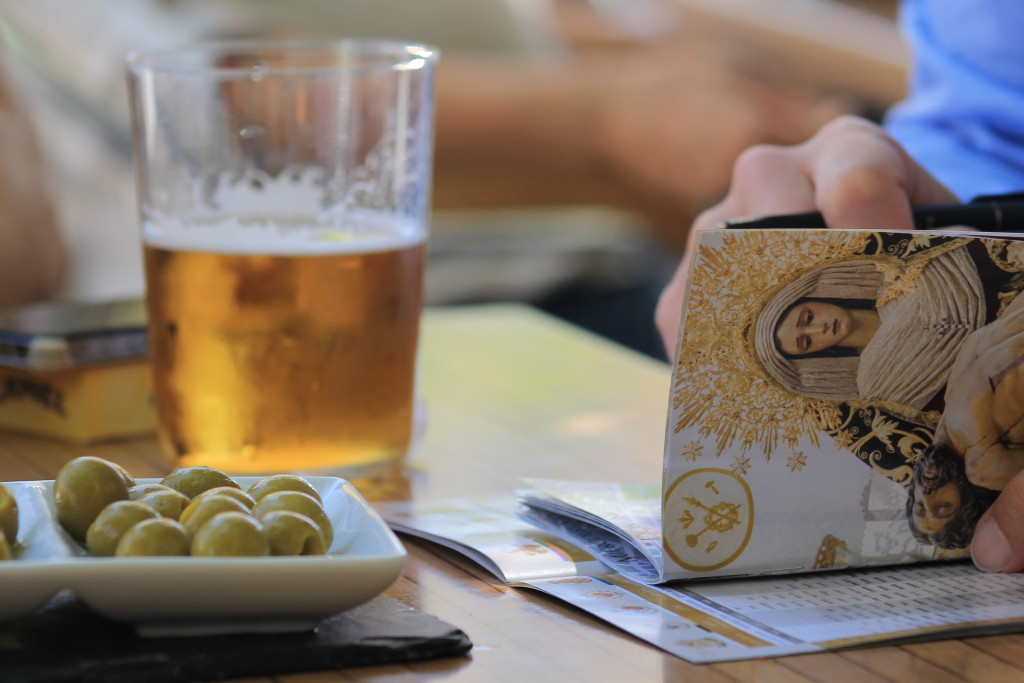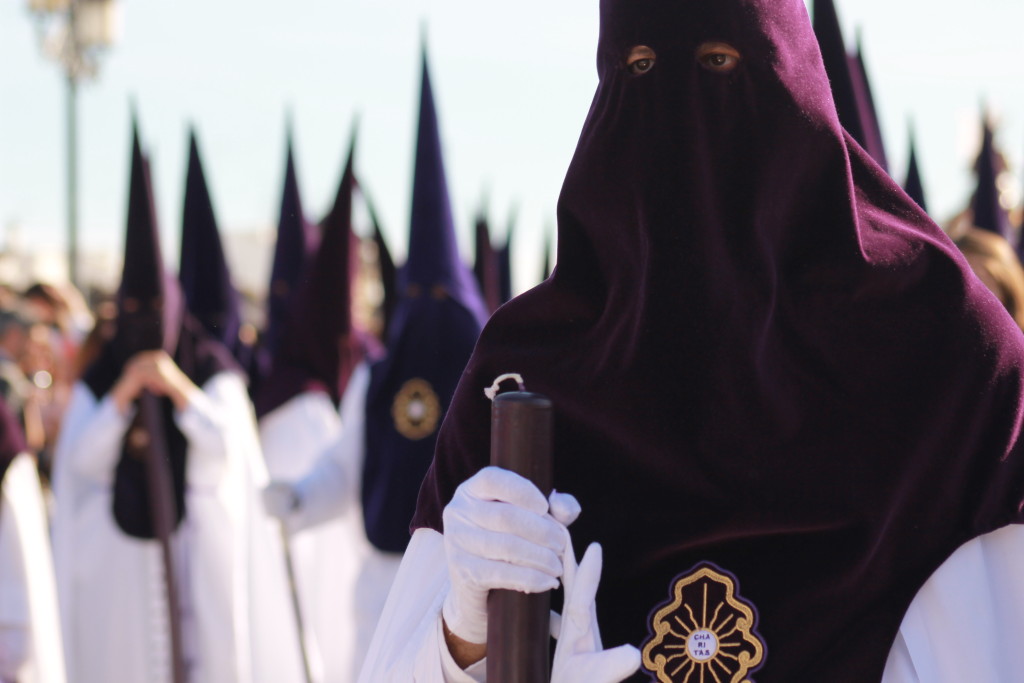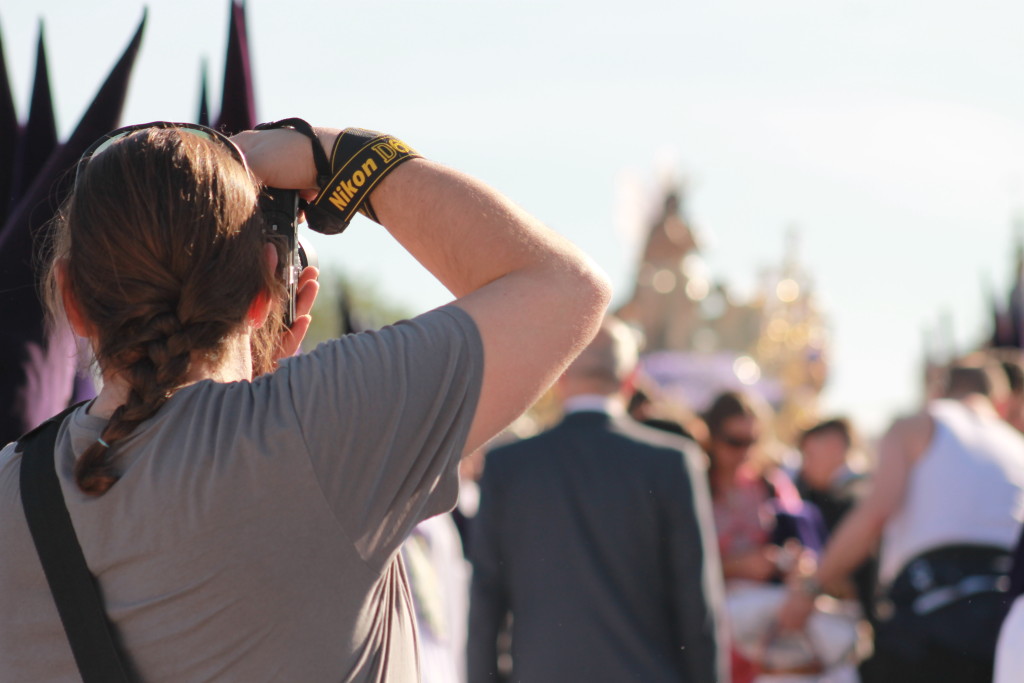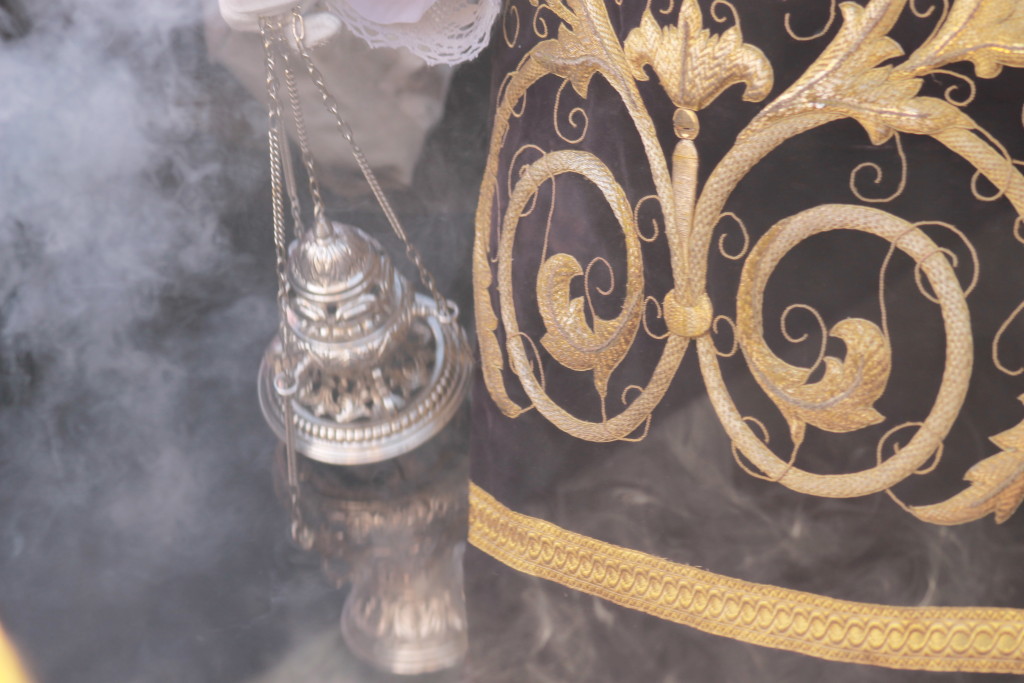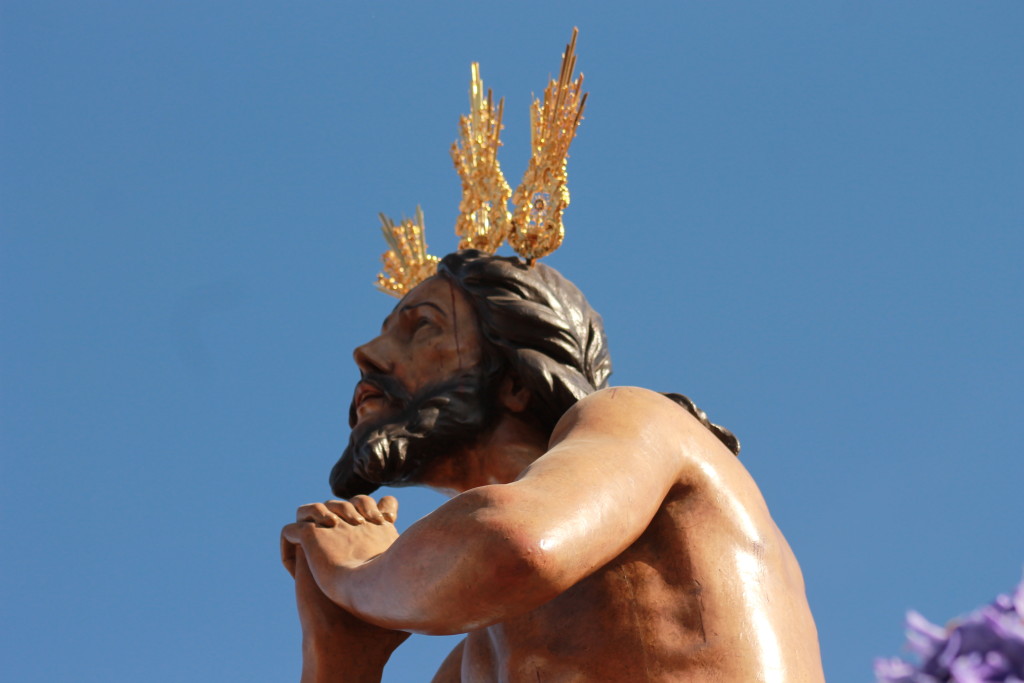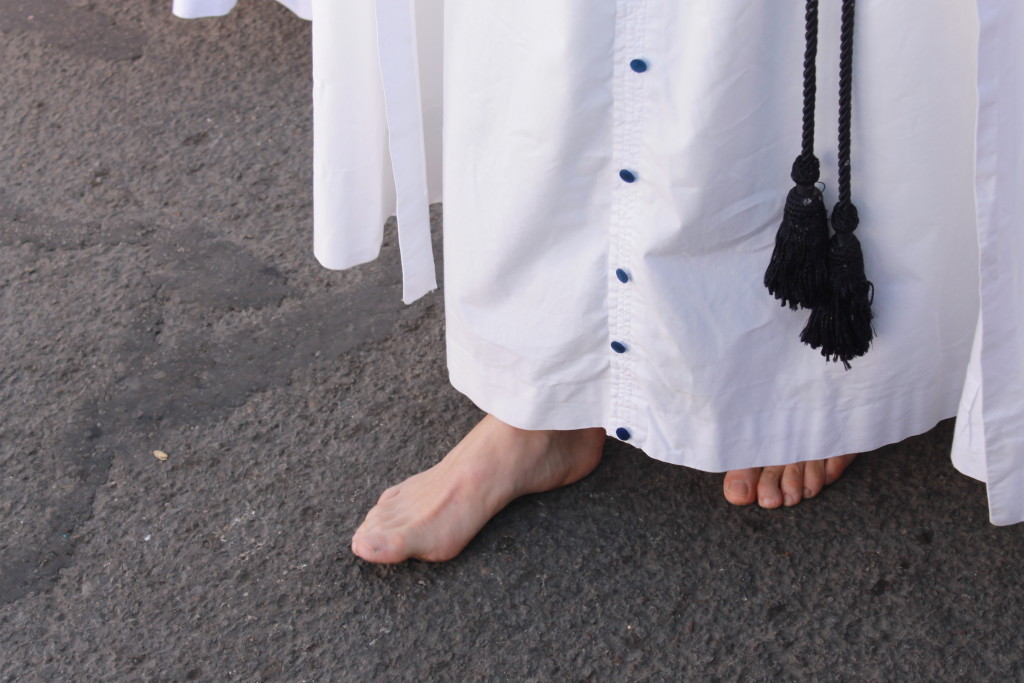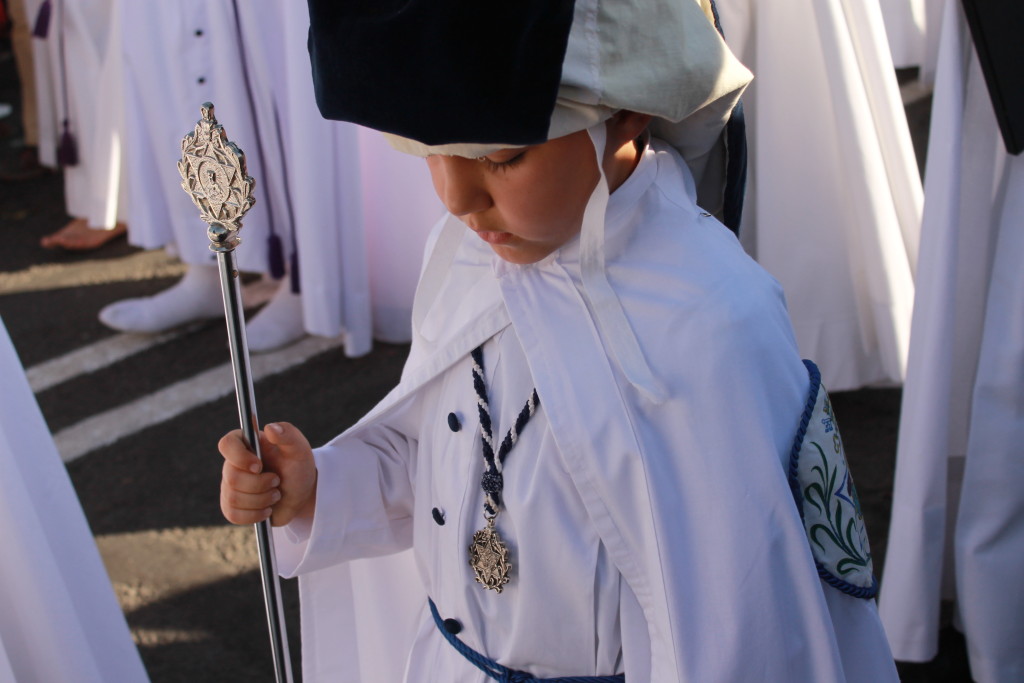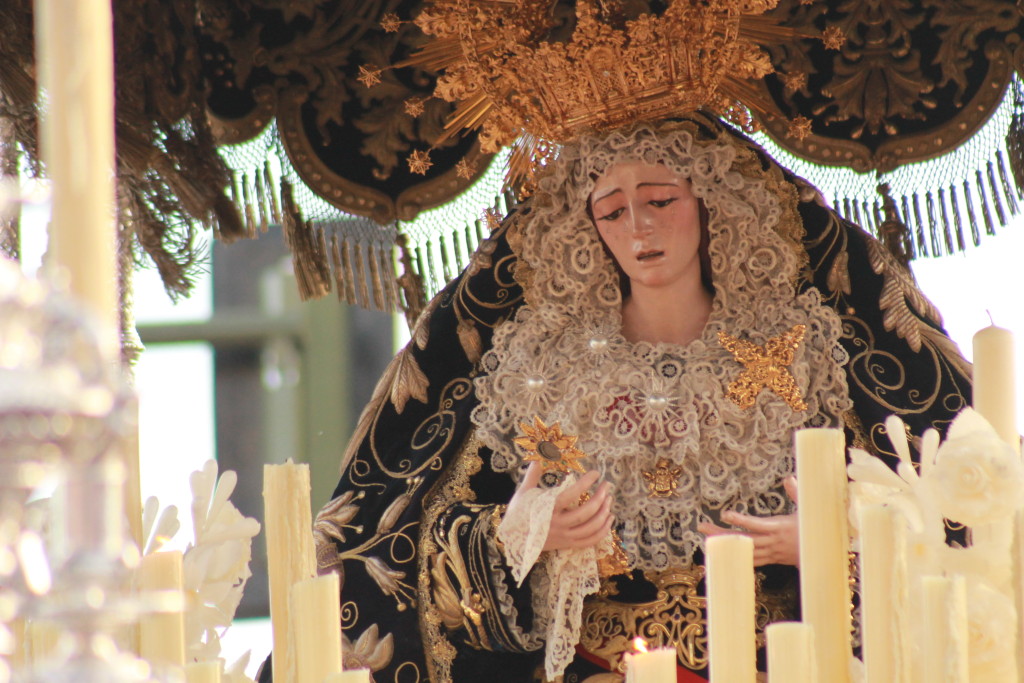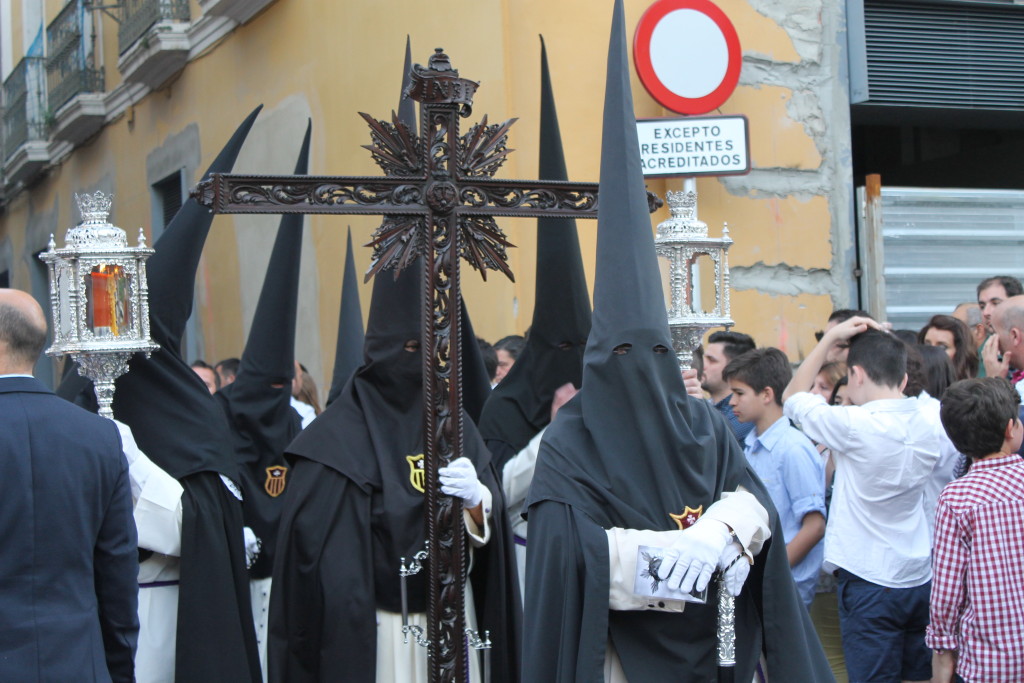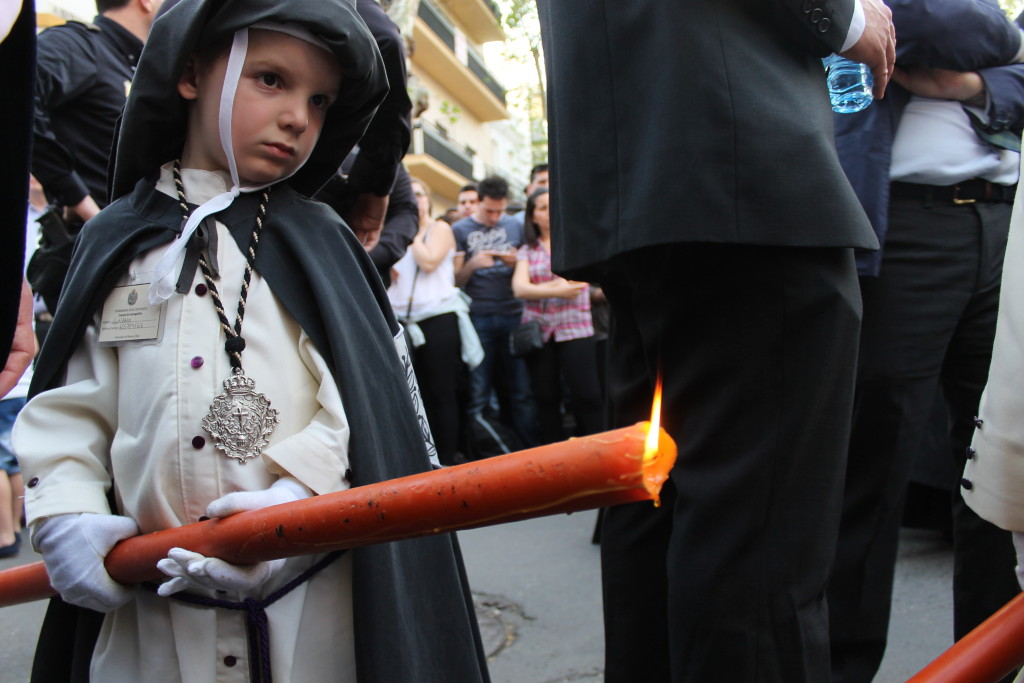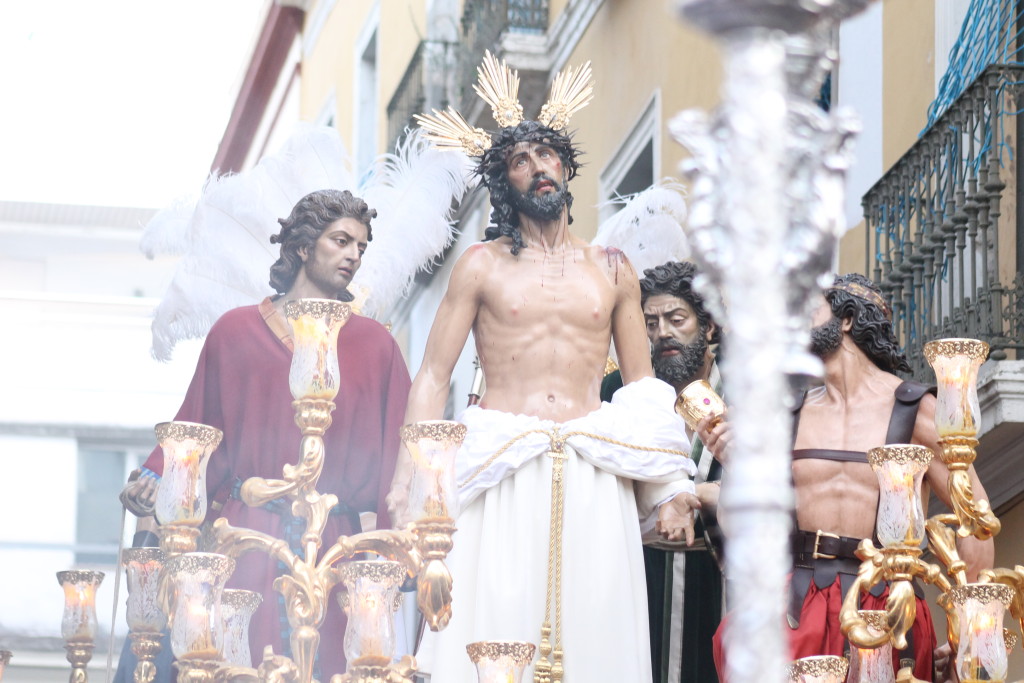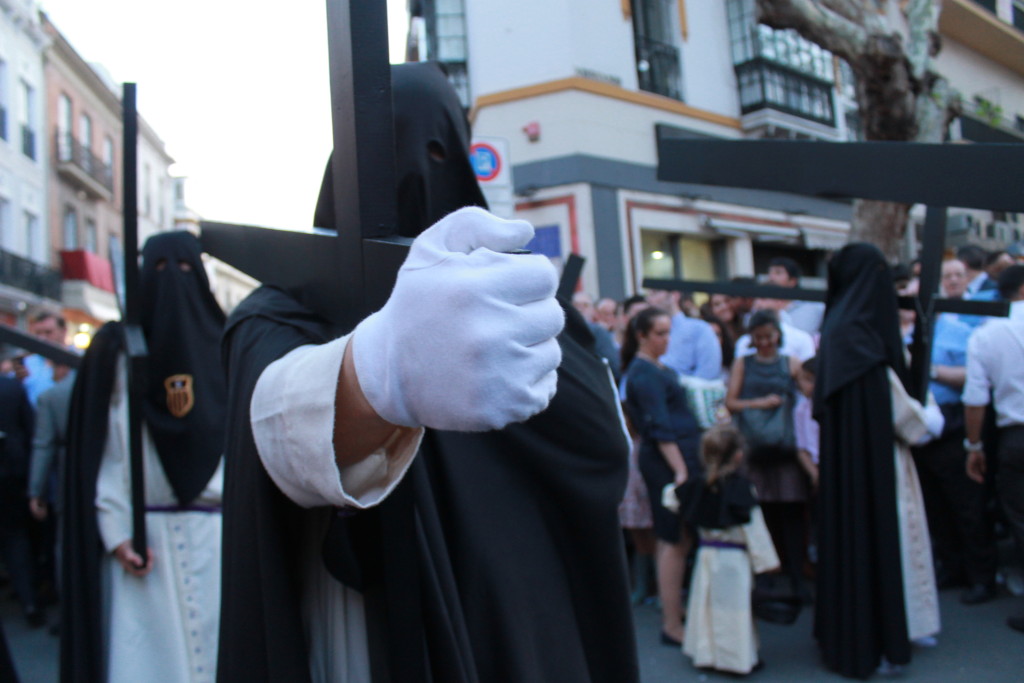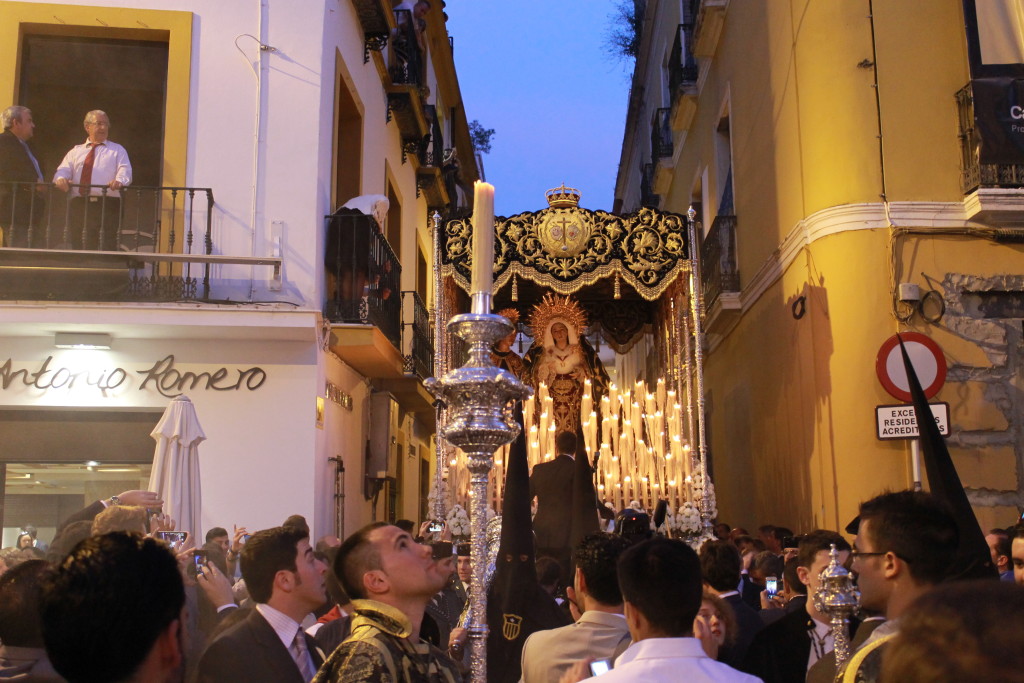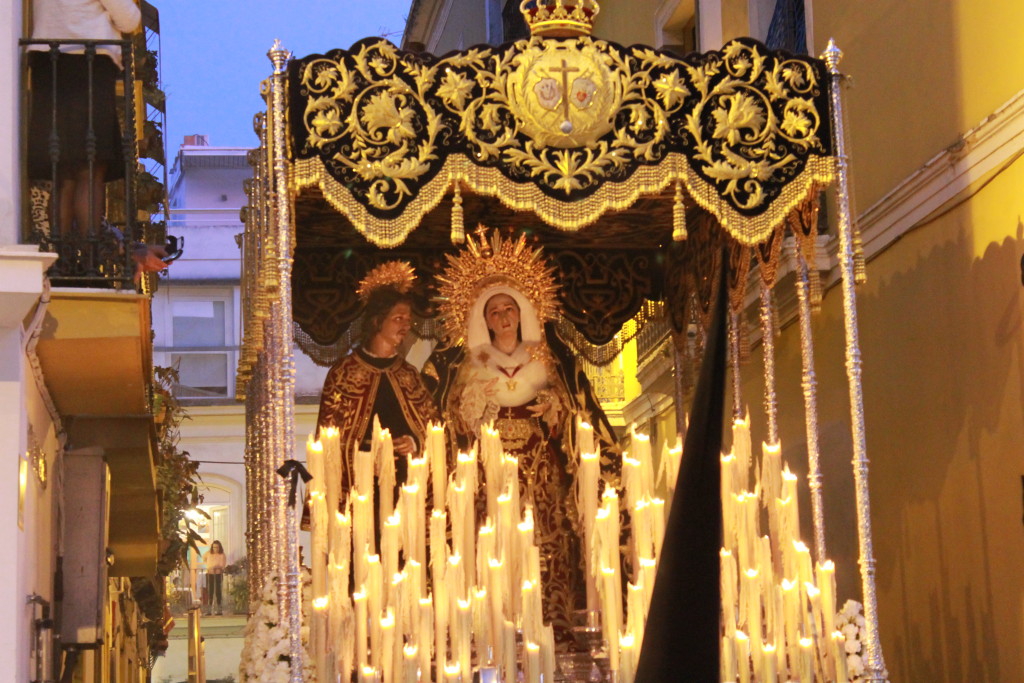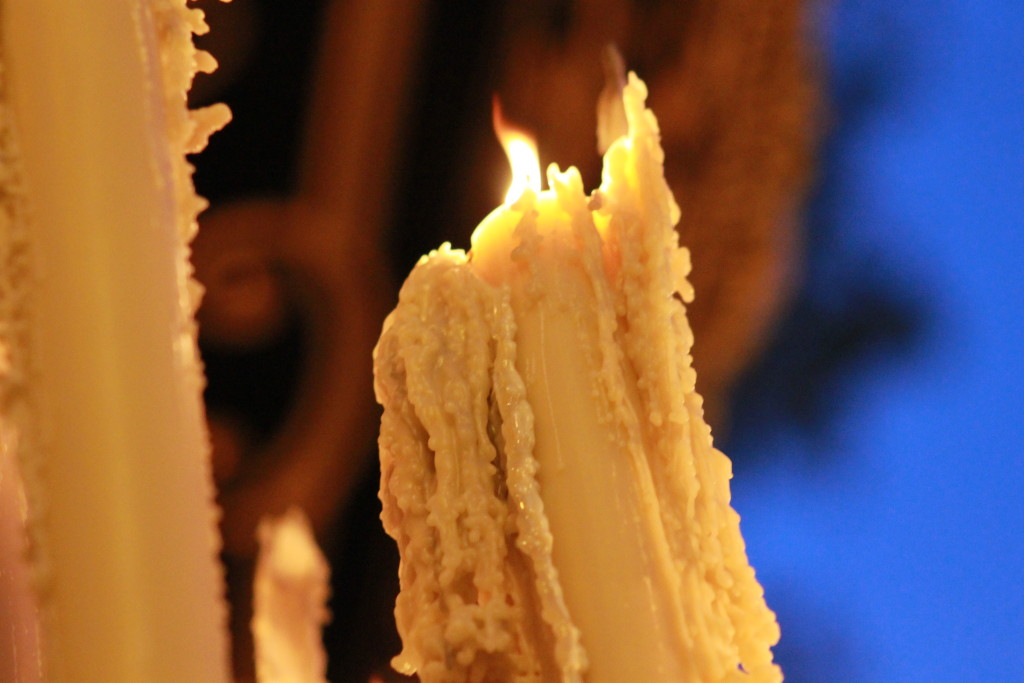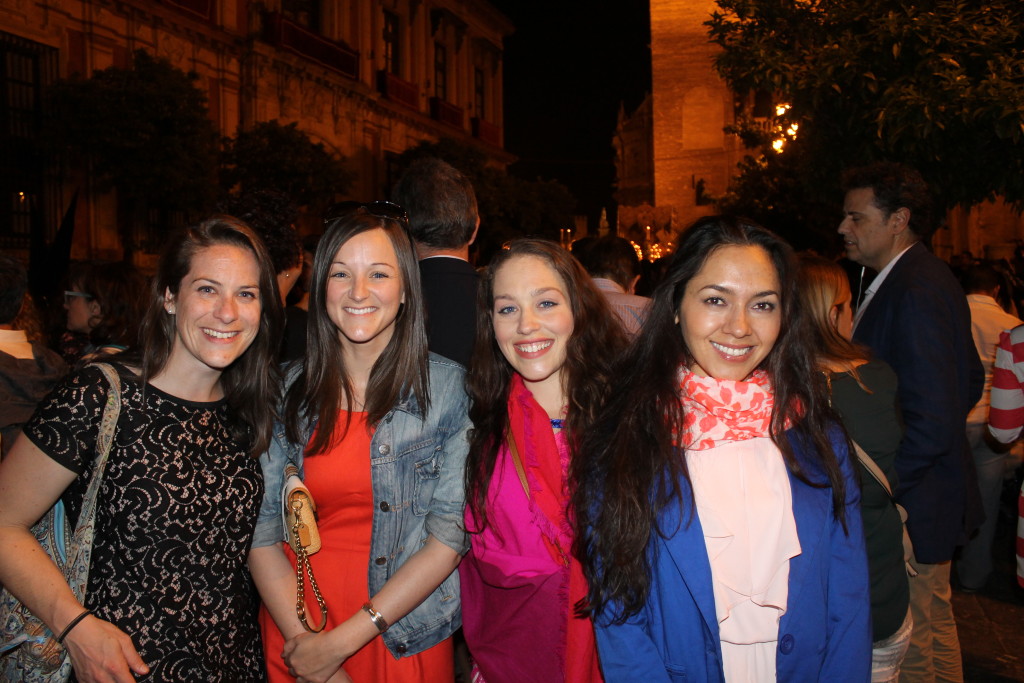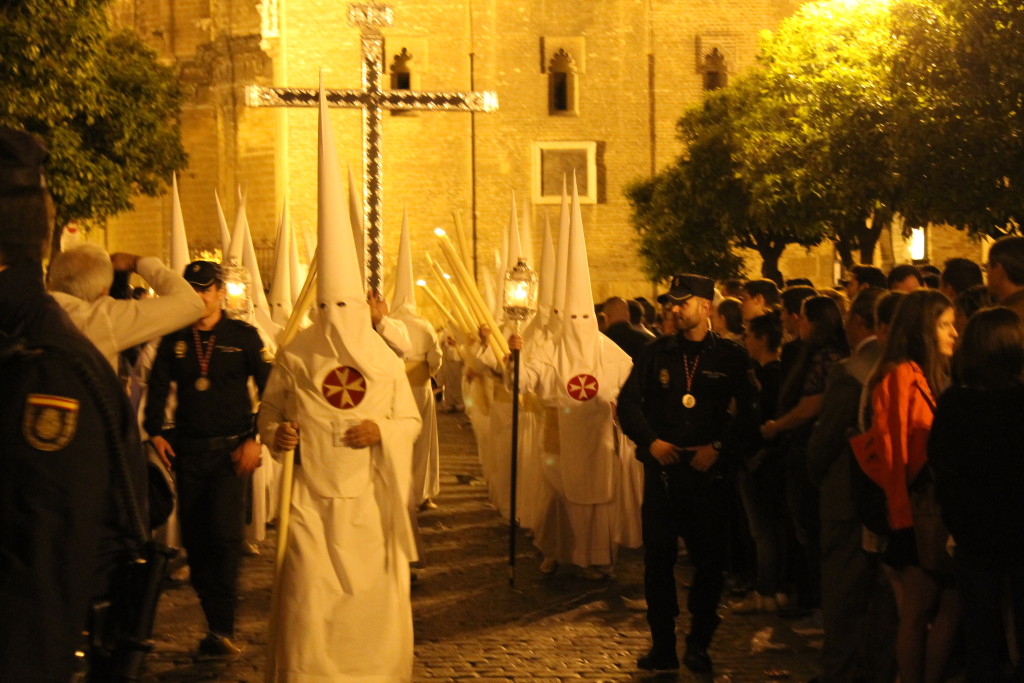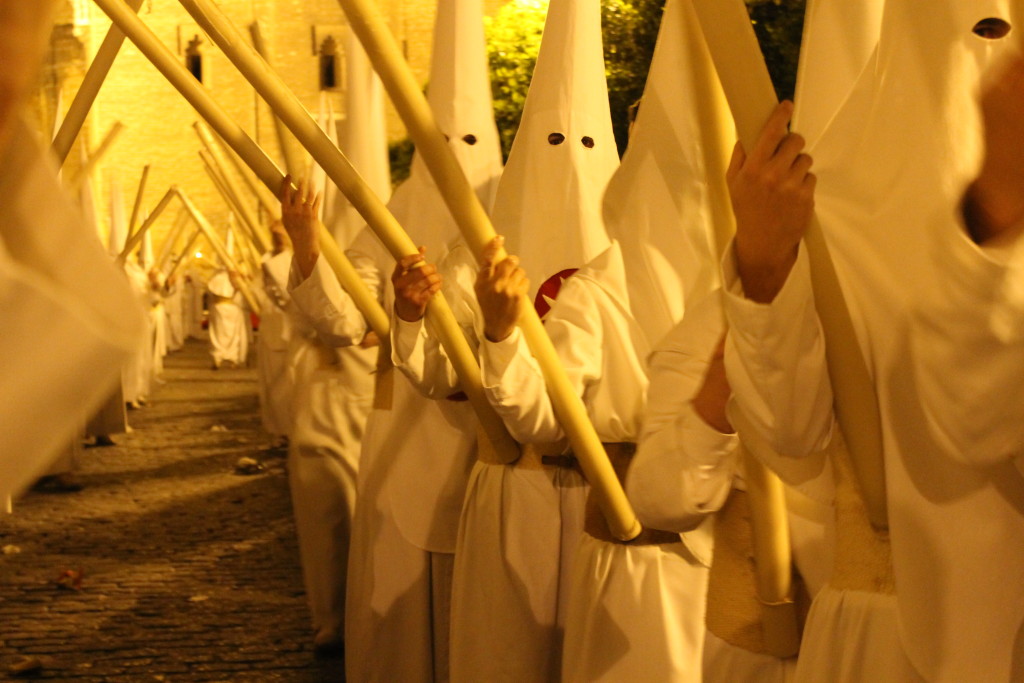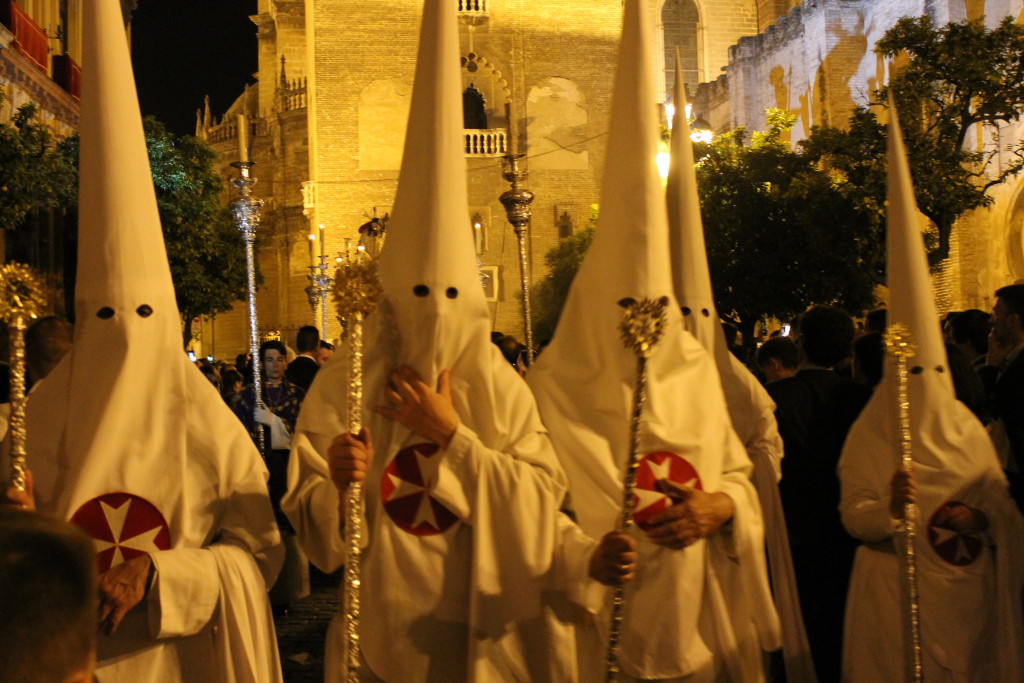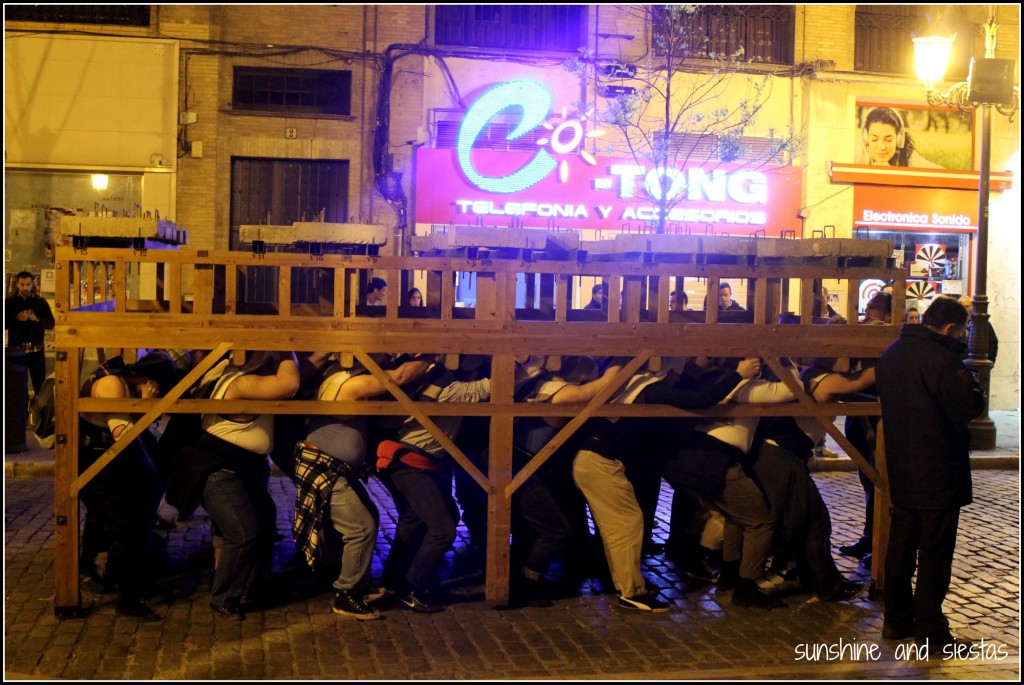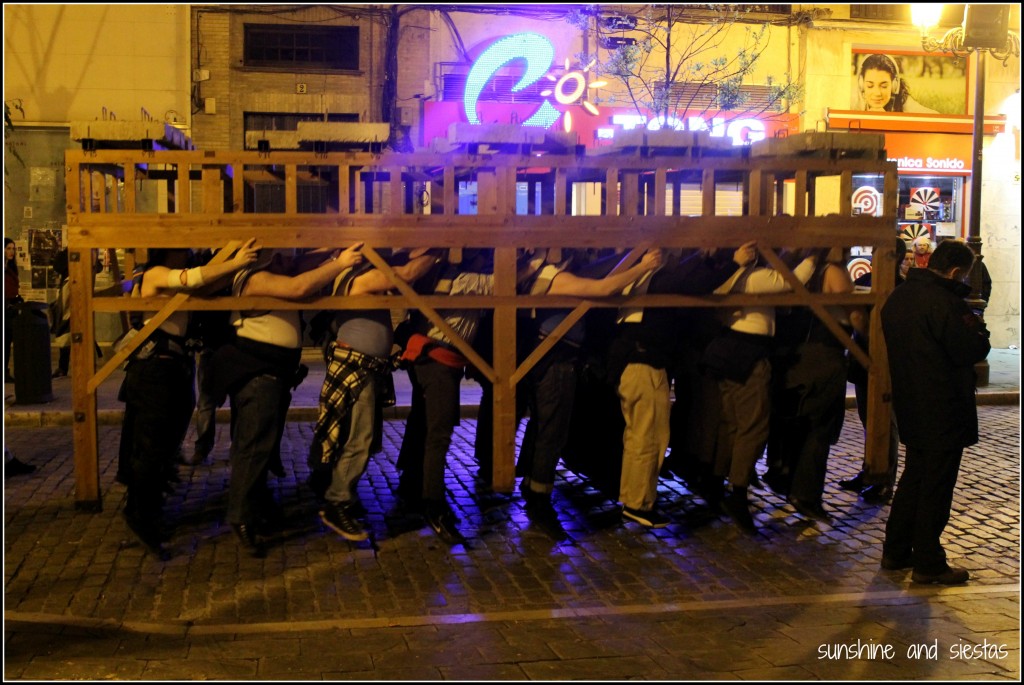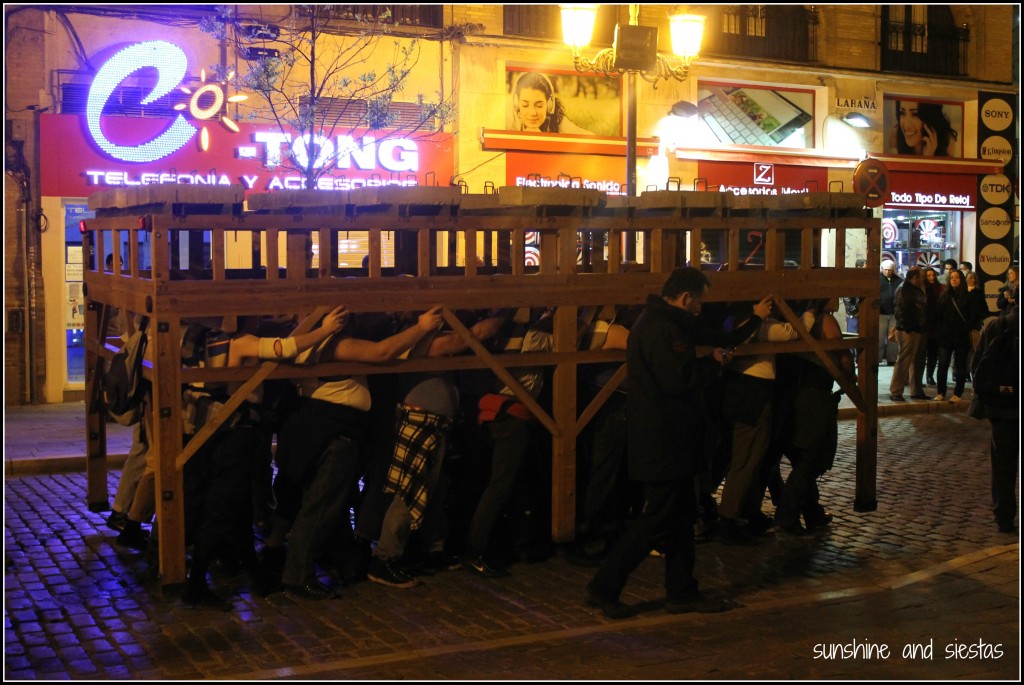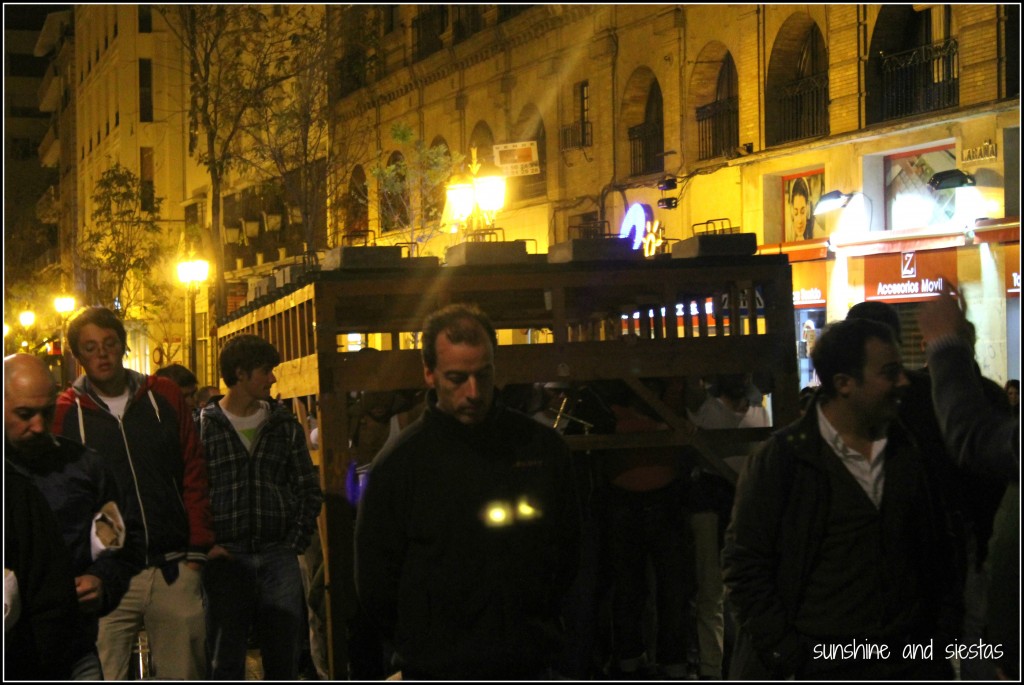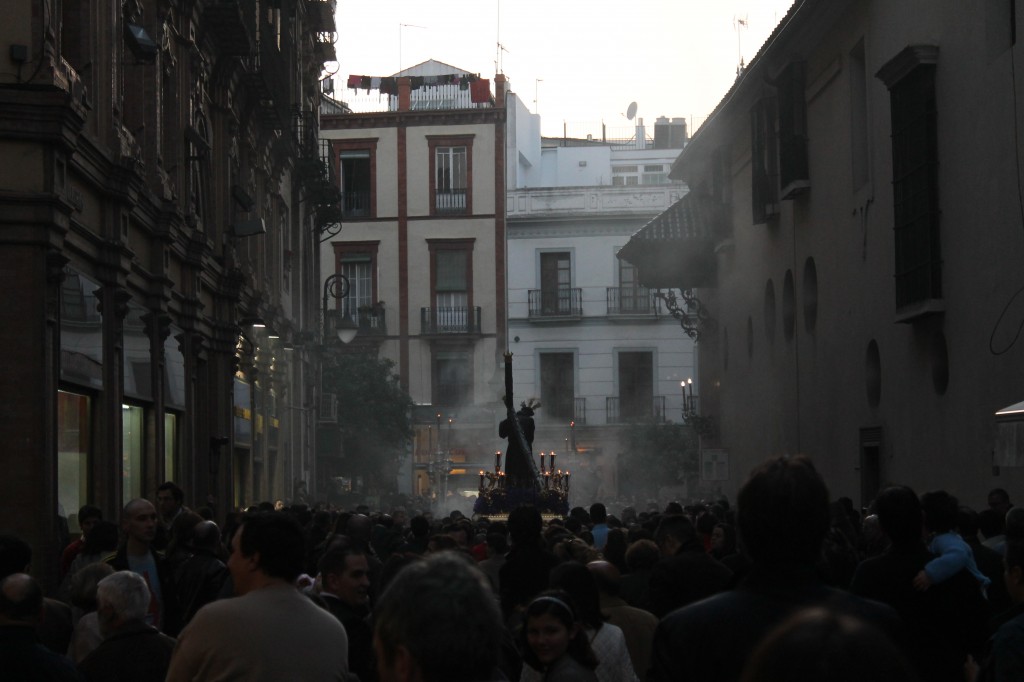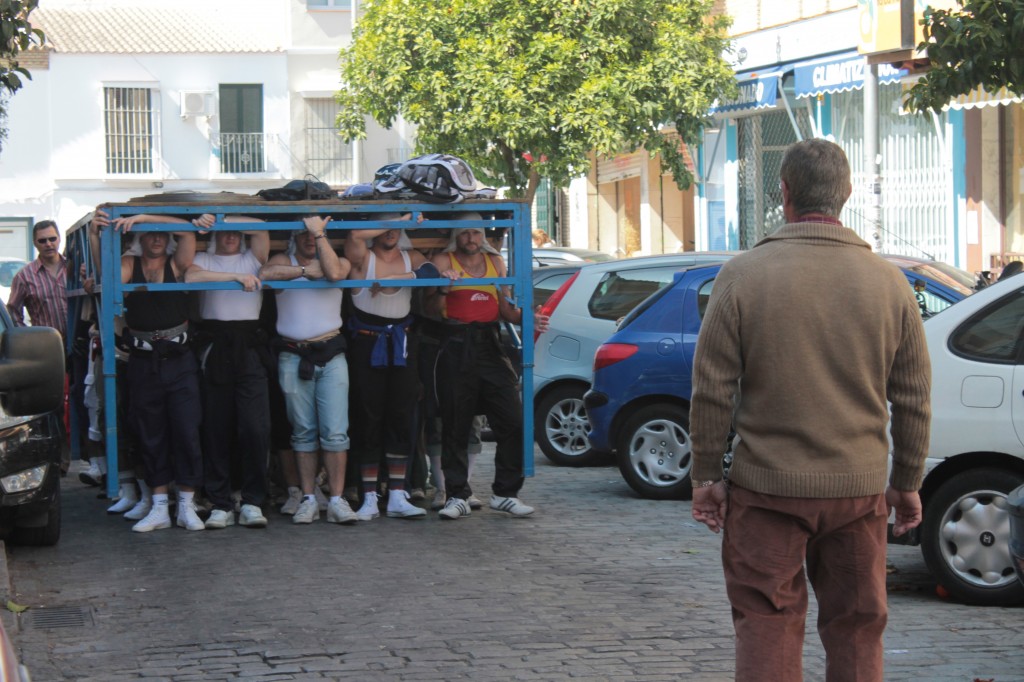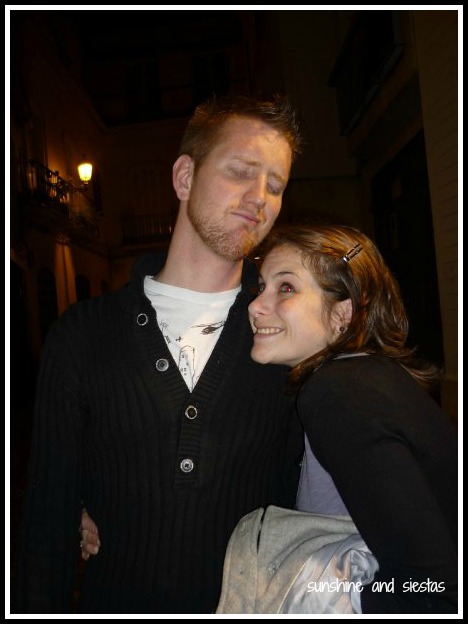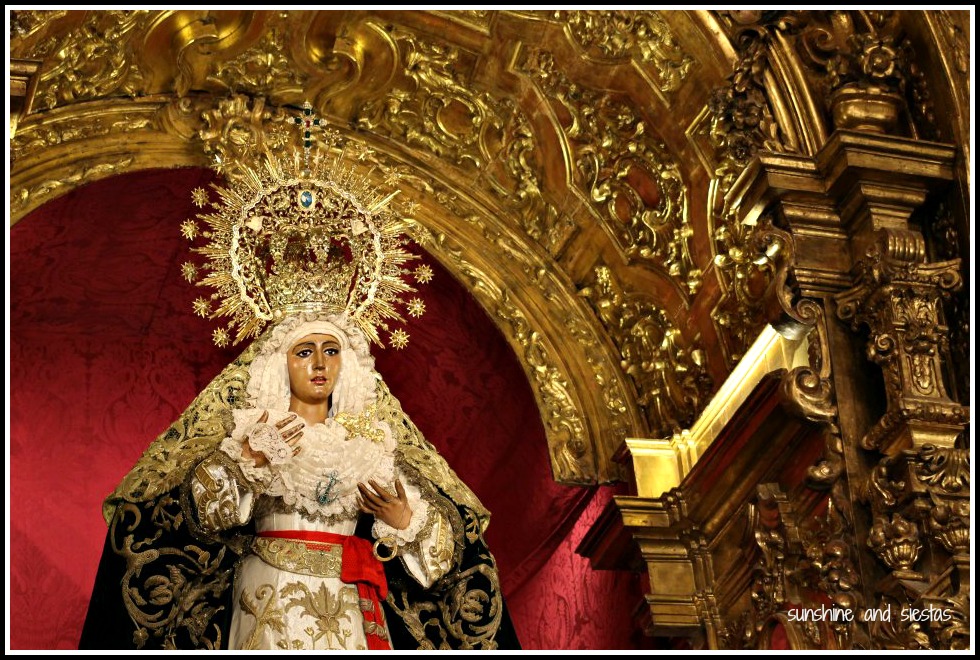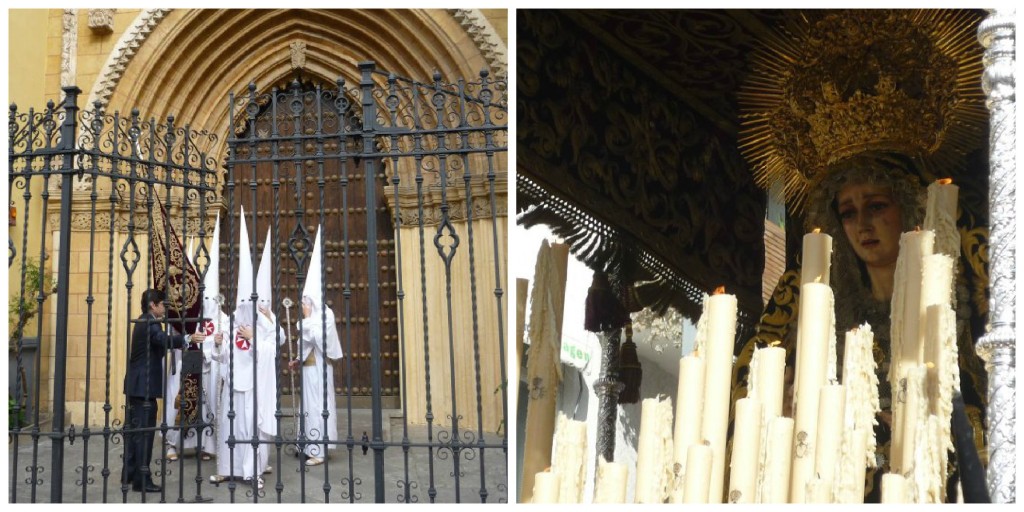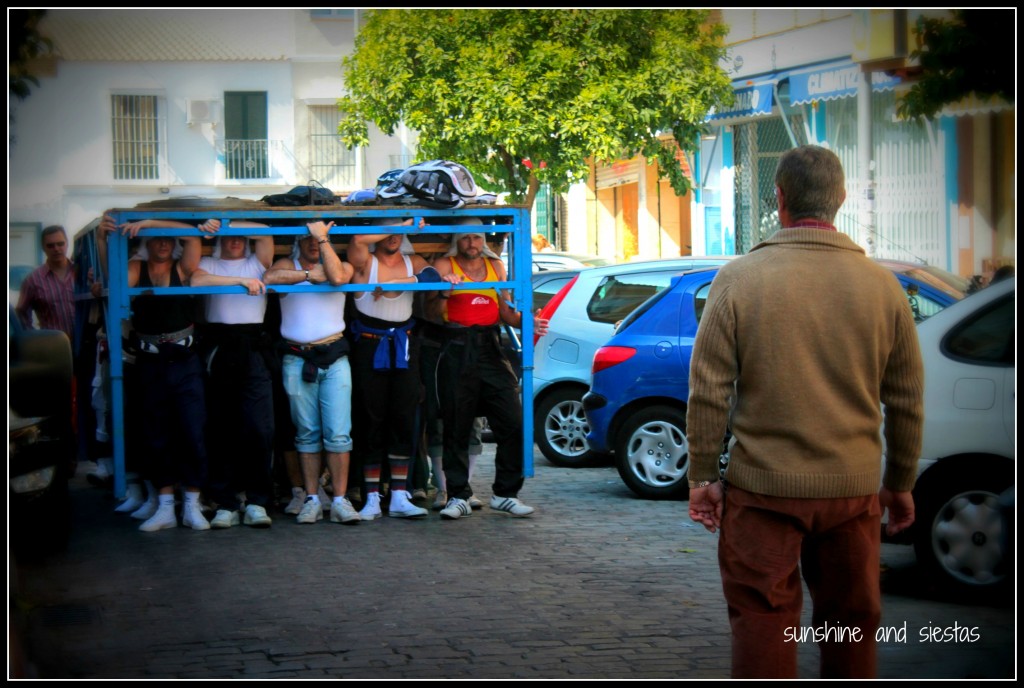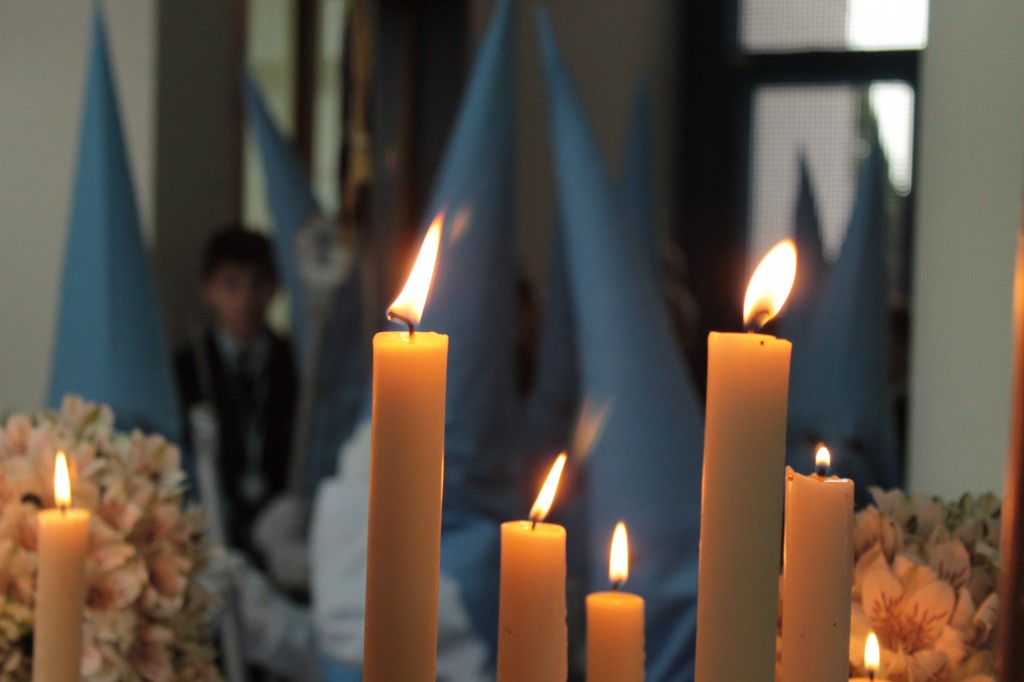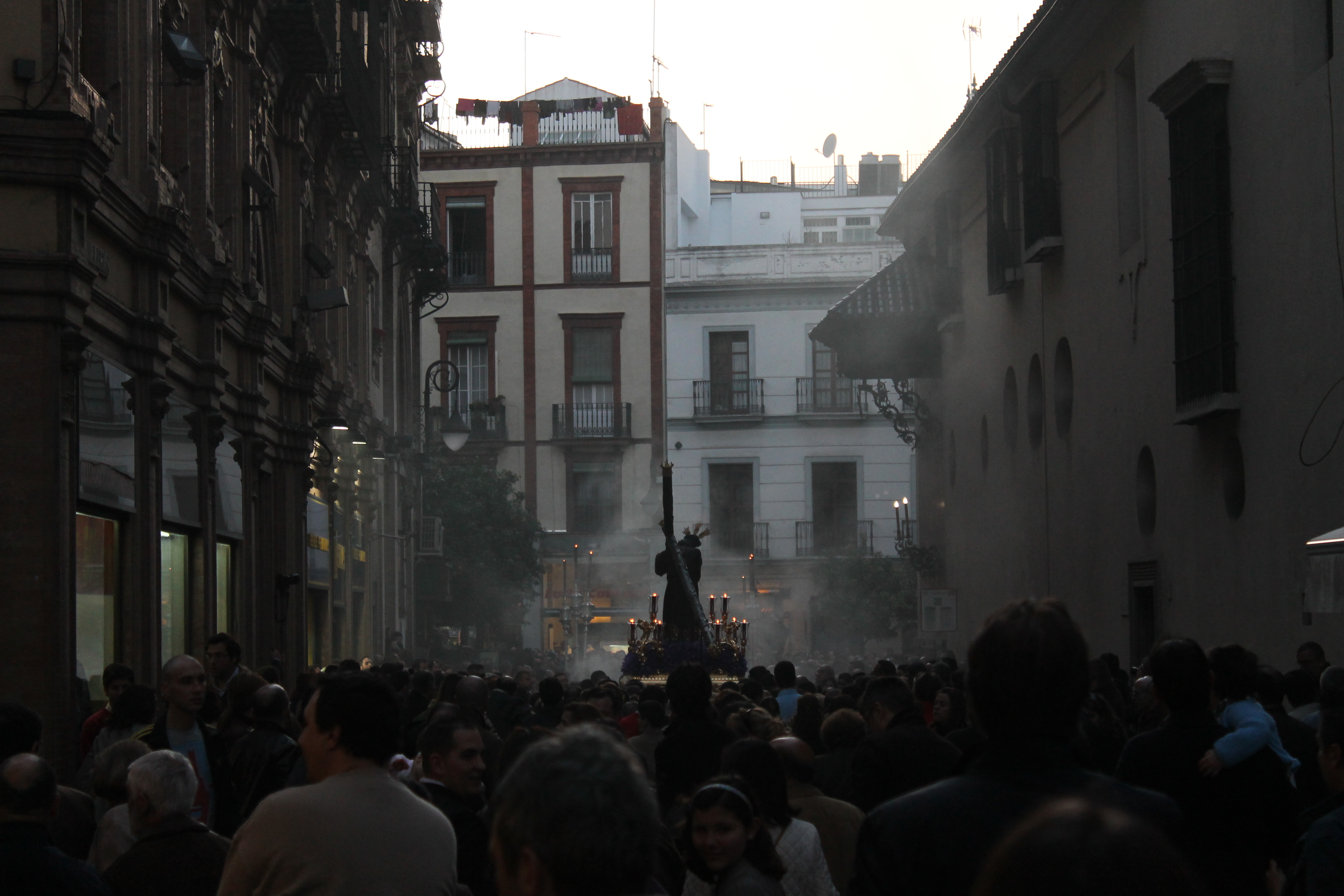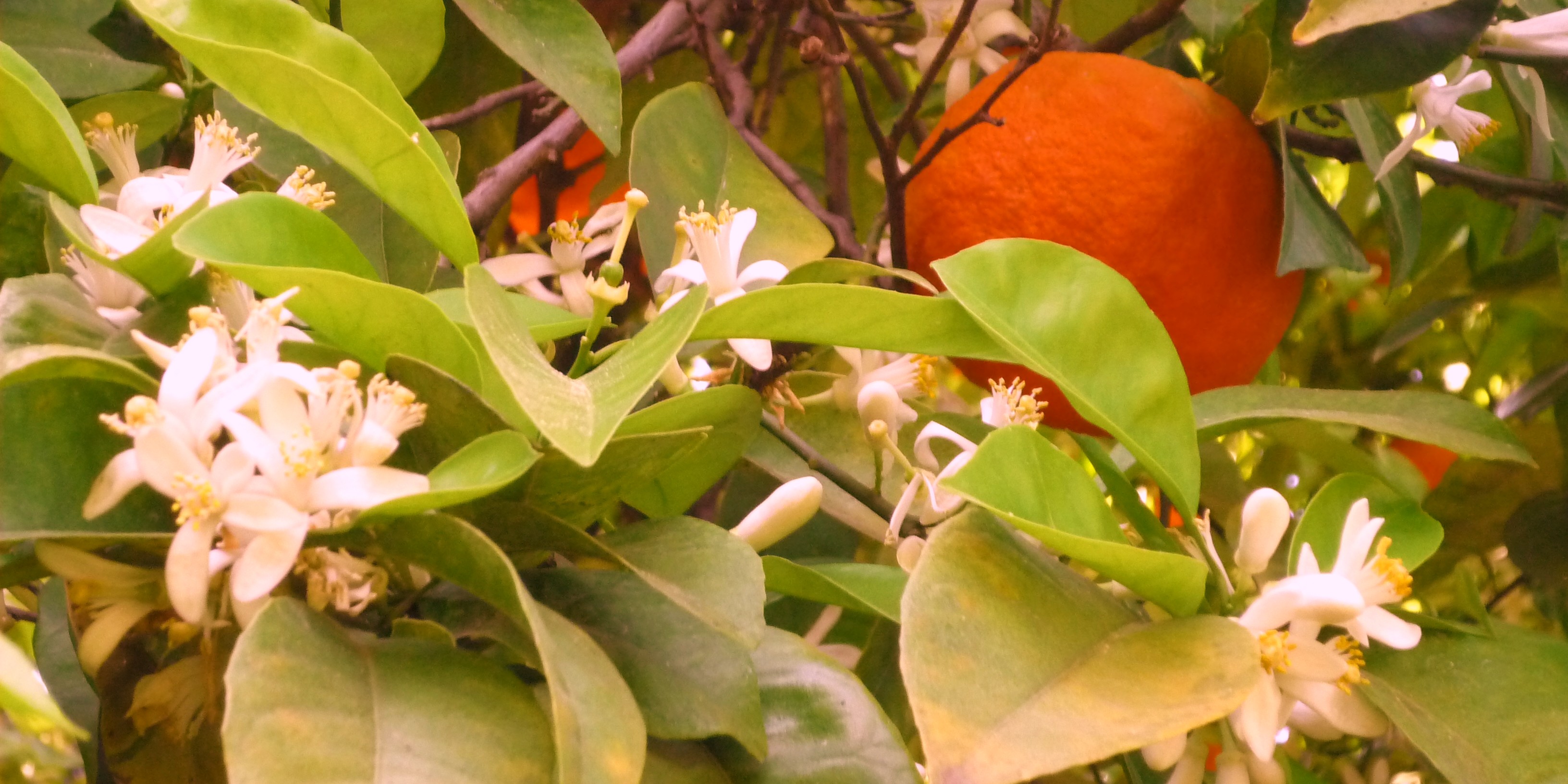I packed my bag hurriedly but with purpose: I’d need sunscreen, lipstick, a street map and my camera with long-distance lens. Nothing more, nothing less. I locked the door and walked hurriedly to the bar.
After more than seven years in Seville, I was finally staying to see Holy Week, the somber processions that punctuate the spring rains and precursor to the raucous fair. My ten-day break from school usually means a trip to somewhere far away from pointy hats and heavy floats – I’ve used Semana Santa to see the Taj Mahal, sip Turkish coffee in Istanbul, to road trip through Europe’s youngest country.
But this year, I made torrijas, a typical sweet eaten during Lent, and buckled down to see the pasos. After lunch in Triana, Kelly and I took the long way to see La Estrella – one of the neighborhood brotherhoods, called hermandades. This takes planning, sturdy shoes and a lot of patience.
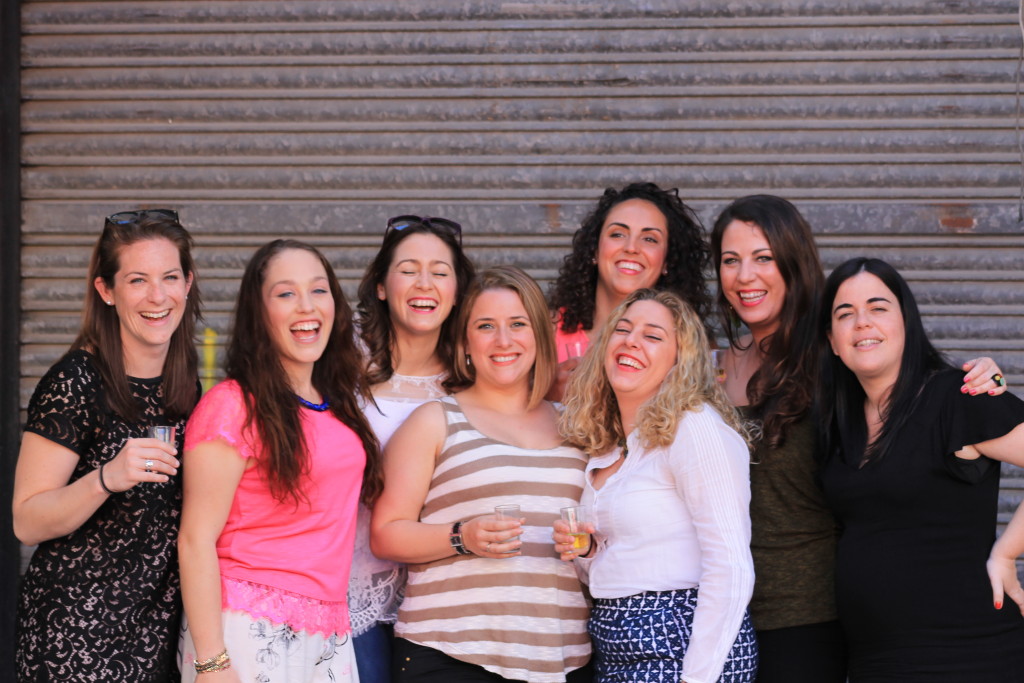
As a Semana Santa Virgin – bad pun, I admit it – I was intrigued and had an open mind. And after weeks without even taking Camarón with me, he was long overdue for a day out. Over 400 photos later, I’ve been convinced that Holy Week is aesthetically pleasing, albeit a logistical headache, even in the back-end of Triana! Here are some of my (untouched!) favorites:
La Estrella – from the Seville side of the Puente de Triana
Rather than crossing over the Puente de Triana, we took El Cachorro. The city’s most iconic bridge sees five brotherhoods pass over on its way to the Carrera Oficial between la Campana and the Cathedral and back home.
La Estrella is Triana’s first and one of its most beloved. The purple and blue antifaces seemed less jarring in a bright afternoon light. Seeing my first paso had all of the hallmarks – nazarenos handing out candy to kids, barefoot brothers seeking penitence while clutching rosaries, two floats and brass bands.
We watched the Cristo de las Penas pass by, the air tinged with incense and azahar mixing with doughy fried churro steam. And, in true Semana Santa, we then went to a bar, had a drink, and emerged an hour later to wait for the Virgen de la Estrella.
I’d come to discover that this is Semana Santa – waiting, pushing, waiting, drinking a beer, walking, waiting.
El Jesús Despojado – from Antonia Día/Adriano
As soon as the band immediately behind the Virgen de las Estrella passed by, the throngs of people immediately disseminated. Like a couple of cabritas, we followed them, hatching out a semi-plan with the use of the Llamador guide and a vague idea of where some streets were.
We found a spot on the curb just past the bull ring to watch Jesús Depojado – an image of Christ being disrobed – just before the Cruz de Guía emerged from an alleyway. Brothers handed us small pictures of the images, called estampitas, as they passed by, lighting the candles they held in their hands as dusk fell.
This particular procession captivated me, from the way children dipped their white gloves into the pools of hot wax as the cirios burned down to the way the costaleros turned the float around a tight corner to cheers and clapping.
La Amargura from Placentines/Alemanes
Kelly and I found Ximena and Helen after taking the long way around Barrio Santa Cruz. Helen had found a pocket of space in the shadow of the Giralda to watch her boyfriend’s procession, La Amargura. It was past 10pm, and the lights of the buildings had been switched off.
La Amargura is a serious brotherhood whose nazarenos cannot break rank. Even with their faces covered and hands grasping their antifaces, the solemnity was evident. When the white-clad nazarenos begin filing by with their cirios lit, I gasped. It was eery, haunting.
Just as I was crossing over the Carrera Oficial with the help of some local police and a hold up with El Amor’s procession, my mom called. I stumbled back to Triana via side streets just in time to watch El Cristo de las Penas enter into its temple.
Like a car backing up into a garage, the float was maneuvered halfway in before lurching out three times, finally entering on the shoulders of 48 costaleros after more than 13 hours of procession. I stumbled into bed well after 3am, myself having done a procession of my own for 13 hours.
Have you ever seen Semana Santa in Sevilla? Which processions are your favorites?
